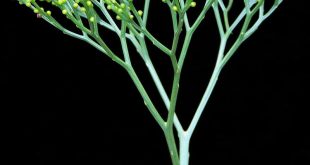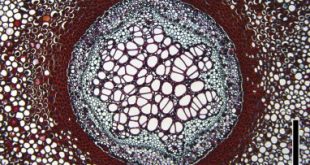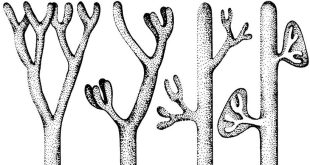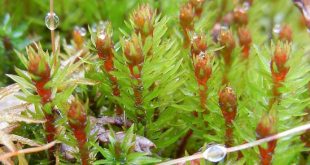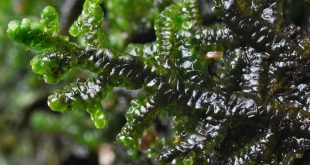Psilotum is commonly known as Whisk-fern. Salient features of Pilotum The sporophytes are dichotomously branched with an underground rhizome and upright branches. The upright branches are leafless. Rhizoids are present instead of root. Stem has a relatively simple vascular cylinder. The sporangia are born in groups (trilocular) and form synangia. …
Read More »Pteridophytes: Types of Stele & Its Evolution
A stele is the central cylinder or core of vascular tissue in higher plants and Pteridophytes. It consists of the xylem, phloem, pericycle, medullary rays, and pith if present. The term stele has been derived from a Greek word meaning rod or column. Van Tieghem and Douliot (1886) introduced this …
Read More »Introduction to Pteridophyta
The word cryptogams is a synthesis of two Greek terms kruptos meaning ‘hidden’ and gamos meaning ‘wedded’. This single term encompasses all plants that reproduce by means of spores and, do not produce seeds. The algae, fungi, bryophytes and pteridophytes are all cryptogams. The pteridophyta are treated as vascular cryptogams …
Read More »Pteridophytes: Classification of Pteridophyta
The term Pteridophyta was first coined by Haeckel. Eichler (1883) divided the plant kingdom into Cryptogamia and Phanerogamia. The Cryptogamia was further divided into Thallophyta. Bryophyta and Pteridophyta. Engler (1909) included the Bryophyta and Pteridophyta under Embryophyta. Due to discovery of the fossil plants, the classification of Pteridophytes has undergone …
Read More »Pteridophytes: Origin and Evolution
They are the earliest known vascular plants that originated in the Silurian period (400 million years ago) of the Palaeozoic Era and subsequently diversified and formed the dominant vegetation on earth during Devonian to Permian period. There are controversies regarding their origin and evolution. There are two broad theories about …
Read More »Evolution of Plants: Telome Theory
Telome theory was proposed by Walter Zimmerman (1952, 1965). This theory is based on fossil records and explains the major steps in the evolution of vascular plants. According to this theory, all vascular plants have evolved from simple, leaf-less, root-less and dichotomously branched sterile and fertile axes called telomes which …
Read More »Origin Of Bryophytes
Though almost in all cases, when we talk about the origin, it goes about the discussion of fossils, bryophytes don’t have any primitive form than what at present-day it is. Usually, the study about the origin of bryophytes is something like a hypothesis- based upon the comparative studies about the …
Read More »Anthoceros: The Hornworts
Systematic position Division: Bryophyta Class: Anthoceropsida Order: Anthocerotales Family: Anthocerotaceae Genus: Anthoceros Habit and Habitat The name ‘Anthoceros’ means ‘flower horn’ and refers to the characteristics horn-shaped saprophyte. Anthocerosis a genus of hornworts in the family Anthocerotaceae. With about 250 species, it is widely distributed in the tropical and temperate regions …
Read More »Sphagnum: A Useful Peat
(AB: This article only contains the use of peat from Sphagnum and it’s uses in gardening. Although some constructive discussions are in here to facilitate it, they are not exhaustive.) If you are fond of gardening or concerned about the dying condition of your trees, this article will be helpful …
Read More »Porella: The Leafy Liverworts
Systematic Position Division : Bryophyta Class : Hepaticopsida Order : Jungermanniales Family : Porallaceae Genus : Porella Habit And Habitat Get Free Netflix Now Best safe and secure cloud storage with password protection GPL Themes For Free Get Envato Elements, Prime Video, Hotstar and Netflix For …
Read More » Plantlet The Blogging Platform of Department of Botany, University of Dhaka
Plantlet The Blogging Platform of Department of Botany, University of Dhaka
